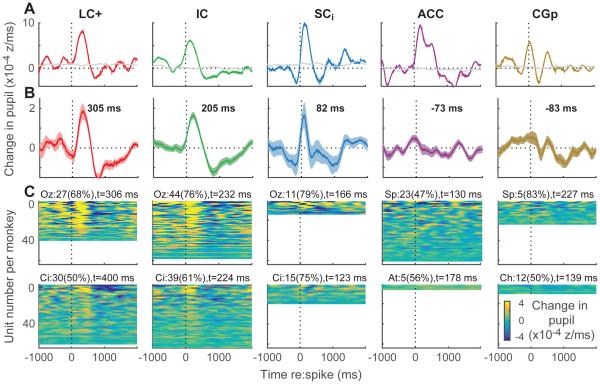Figure 4.
Spike-triggered changes in pupil diameter for each brain region, as indicated (columns). (A) Example units. Colored lines are mean values computed from all spikes recorded during stable fixation in the given session. Gray lines are values computed after shuffling pupil diameter relative to spiking activity on a trial-by-trial basis. (B) Mean±sem spike-triggered changes in pupil diameter computed from the mean, real– shuffled curves computed for each recorded unit from the two monkeys. The time of the maximum value is shown; bold indicates H0: the value at that time=0, p<0.05 bootstrapped from the mean±sem values computed per unit for the given time bin. (C) Mean spike-triggered changes in pupil diameter for all recorded single units, sorted by modulation depth per monkey (top rows show units with the biggest difference between the minimum and maximum values). Text indicates the count (percentage) of sites for each monkey with a reliable peak (defined as ≥75 consecutive bins with at least one bin between 100 ms before and 700 ms after the spike for which real–shuffled was significantly >0, Mann-Whitney p<0.05) and the median time of the reliable peaks. Per-monkey percentages were indistinguishable between LC+, IC, and SCi (chi-squared test, p≥0.05). All analyses used 250-ms time bins stepped in 10-ms intervals.

